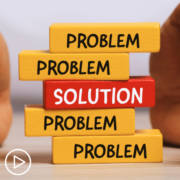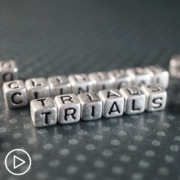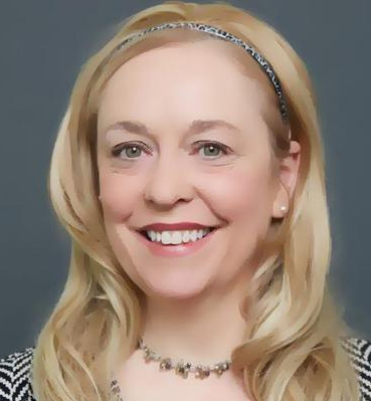Virtual Patient Communities Engendering A New Social Health Era
Howard Rheingold, who coined the phrase virtual communities, describes them as “cultural aggregations that emerge when enough people bump into each other often enough in cyberspace.” Rheingold’s words, though descriptive, may not fully capture the depth and breadth of experience many patients find when they go online.
Before the Internet connected people from every corner of the globe, many patients experienced their illness in isolation. Humans have an innate desire to feel connected with others who live life through similar lenses. The Internet, and social media in particular, has lessened this sense of isolation. It has shown us how much people are willing to reach out to others to provide advice and support – even to strangers online. Clay Shirky, author of Here Comes Everybody: How Change Happens when People Come Together, holds that “the desire to be part of a group that shares, cooperates, or acts in concert is a basic human instinct.”
There are as many reasons for joining a virtual community as there are communities online. Probably the most common reason people go online when they (or someone they care about) are diagnosed with an illness, is to find information. Figures from the Pew Research Center show that 1 in 5 Internet users have gone online to find others who might have health concerns similar to theirs. That percentage is even higher – 1 in 4 – among those living with chronic disease, or caring for someone with a disease. Not surprisingly, doctors remain the first choice for an accurate medical diagnosis. But the number of patients saying they turn to their friends, family and other patients for day-to-day advice, and emotional support is higher.
For some patients turning online for support is more convenient; not everyone can attend an in-person support meeting at the time they most need it. Online you can find 24/7 access to support, unbound by restrictions of time or location. Any person, anywhere, any time – whether they are a patient, caregiver, family member, or friend—can find someone else in similar circumstances who understands what they are going through.
For others, it is about finding hope. Corrie Painter, an angiosarcoma patient, passionately believes that networked patients save lives. In Rare Cancer Meets Social Media, Painter captures the joy of finding hope online.
“When faced with mortality, I think the first thing many of us do is try and find someone, ANYONE else who understands what we’re going through. I put feelers out into every corner of the Internet. And I found people! I sent them messages and received nothing in return. Turned out they were gone, all of them, by the time I tried to reach them. So I turned to Facebook in a last ditch attempt to find anyone who knew anything about this disease. And I found her. The one and only Lauren Ryan, alongside eight other members of an angiosarcoma facebook group that Lauren started in 2010. Every single one of them was alive. They were ALIVE. I instantly connected with each of them. Josephine was 3 years out from my same diagnosis and was ALIVE. Lauren was a year and a half out and had no evidence of disease. They took me under their wing and provided me with hope in spades. I clung to every word they wrote. It was the same story eight times over”.
Personal stories and first person accounts of illness are the life blood pulsing through the social media healthcare eco-system. By telling your story, you can help shed light on a condition’s symptoms, prognosis, and other details for those still searching for the correct diagnosis. Medical terminology and data, though undeniably important, can obscure what it means to live with a disease and make it difficult for most people to relate. Personal stories, though, frame our individual experiences in a way that lets others connect and find diagnostic clues that may have been missing. Isabel Jordan, the mother of a son with a rare disease, credits reading a patient’s blog to help her finally see the pattern in symptoms in her own son’s life, which set them on a new diagnostic path.
“As a parent of a child with a rare disease I’m constantly looking for patterns, for clues, for ideas of what could be next in our diagnostic journey,” she writes, “I look for researchers, doctors, other connected parents to see what they are posting. It was through reading someone else’s blog that I could finally see the pattern in symptoms in my own son’s life. Connecting the dots by seeing them in someone else let me provide valuable clues to our own clinician researchers and now we’re heading down a new diagnostic path. Would I have seen them anyway? I don’t know. But I credit my connections on social media for helping me keep my eyes open to new ideas”.
In the case of rare diseases, where doctors simply don’t have the answers to patients’ questions due to low patient numbers and, consequently, insufficient research into the disease, it is the patients themselves who are banding together to find the answers they need. Katherine Leon, an SCAD (spontaneous coronary artery dissection) survivor, leveraged the power of her virtual community to find the cause of her rare heart disease, and prevent it from happening to others. At the time of her diagnosis, SCAD was a poorly understood and under-researched condition. Physicians had no clinical studies on which to base treatment plans. Katherine connected with fellow SCAD survivors through social media and used their collective voice to do what hospitals couldn’t – to launch research at the Mayo Clinic. Leon credits social media as a key research accelerant. “Social media absolutely gets the credit for making scientific study of SCAD possible” she says, “in 2003, my cardiologist told me I would never meet another SCAD patient. It was just too rare. Today, I “know” more than 1,000 fellow survivors thanks to Inspire, Facebook and Google”.
If stories are the life blood of an online patient network, a strong sense of community is at its heart. Members share an emotional connection to each other and a sense of shared experiences. They have a feeling of belonging to and identifying with the community, believing they matter within the community and they can influence and be influenced by them. Diabetes patient and advocate, Renza Scibilia believes that “there can be real solidarity when you are part of an online community.” She writes, “one of the reasons social media is so powerful is because of the way it connects people. By removing all the constraints that would normally prevent people from sharing, we form connections based on shared experiences and familiar stories”.
What does the future hold for virtual patient communities?
In David Weinberger’s book, Too Big To Know, the author argues that we are in a new age of “networked knowledge”; meaning that knowledge – ideas, information, wisdom – has broken out of its physical confines and now exists in a hyper-connected online state. Translating Weinberger’s argument to healthcare, the narrative is one in which the uptake of social media signifies a radical transformation of established notions of patienthood, with patients now situated within connections to other patients, family members, carers and healthcare professionals, creating a new social health experience.
CEO of Smart Patients, Roni Zeiger M.D., is convinced “that our next exponential leap in medical progress depends on us learning from networks of micro-experts.” The learning that begins in virtual patient communities can quickly translate to offline activity. Corrie Painter knows first-hand the power of tapping into a network of micro-experts.
“When people find us now”, she writes, “it actually might change the course of their disease. We have sent so many people to the same doctors that they have become clinical experts. These doctors now understand nuances of this disease that weren’t possible when only a handful of angiosarcoma patients would come through their clinics each year. Patients who get treated at these large volume centers bring the knowledge from these clinician experts to their local doctors. As a result, the patients are driving expertise in this rarest of rare orphan cancers, and that expertise is filtering out into local clinics. All because of our collective need to connect with others diagnosed with angiosarcoma”.
In the future, new online tools will come and they will go, but our innate desire to reach out, to connect, and to help one another will remain. It’s people who ultimately build communities, not technology. The communities may be virtual, but they are no less real. It’s still individuals speaking to other individuals, people helping other people. What’s changed, to quote Sussanah Fox, Chief Technology Officer at U.S. Department of Health and Human Services, is that we now do it at the speed of internet connectivity. Fox thinks that “the most exciting innovation of the connected health era is people talking with each other.” That may sound simple, but as the stories in this article illustrate, talking with each other can have profound and far-reaching effects in our connected digital age.
A Stanford Medicine X e-Patient scholar, Marie Ennis O’Connor is an internationally recognized keynote speaker, writer, and consultant on global trends in patient engagement, digital health and participatory medicine. Marie’s work is informed by her passion for embedding the patient voice at the heart of healthcare values. She writes about the experience of transitioning from breast cancer patient to advocate on her award-winning blog Journeying Beyond Breast Cancer.







